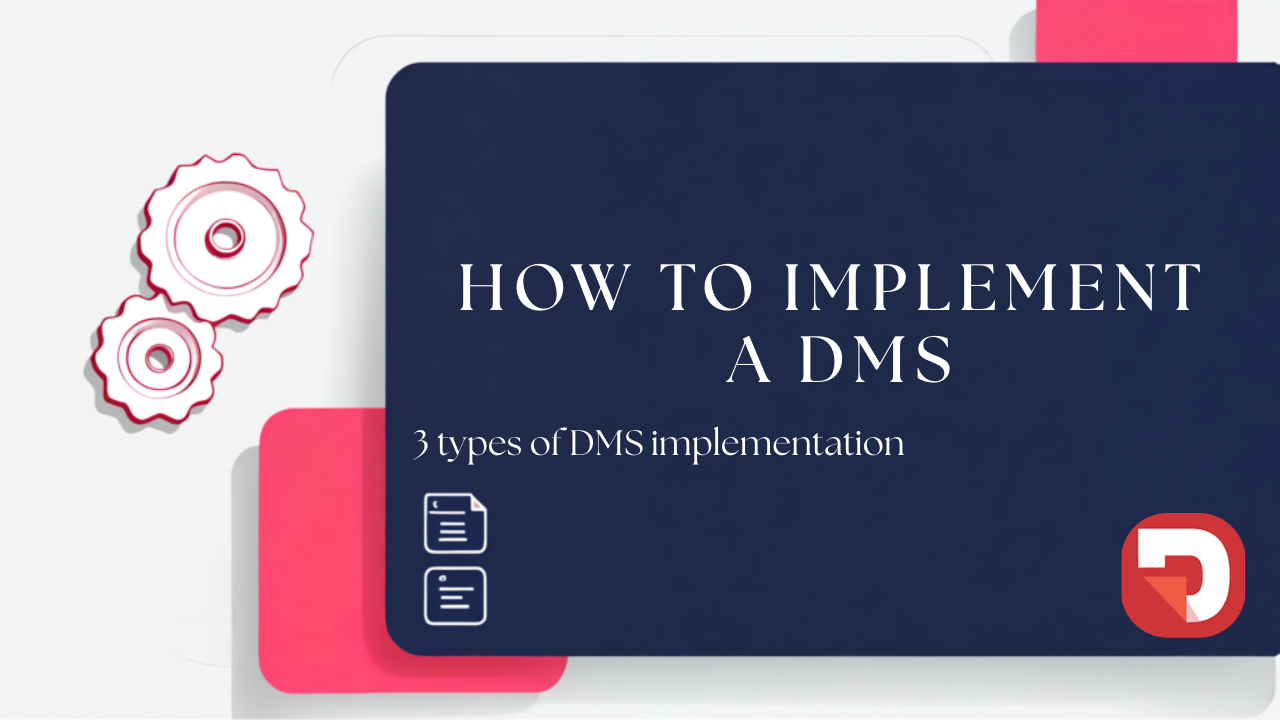
DMS Implementation: How and Where Can You Deploy Your DMS
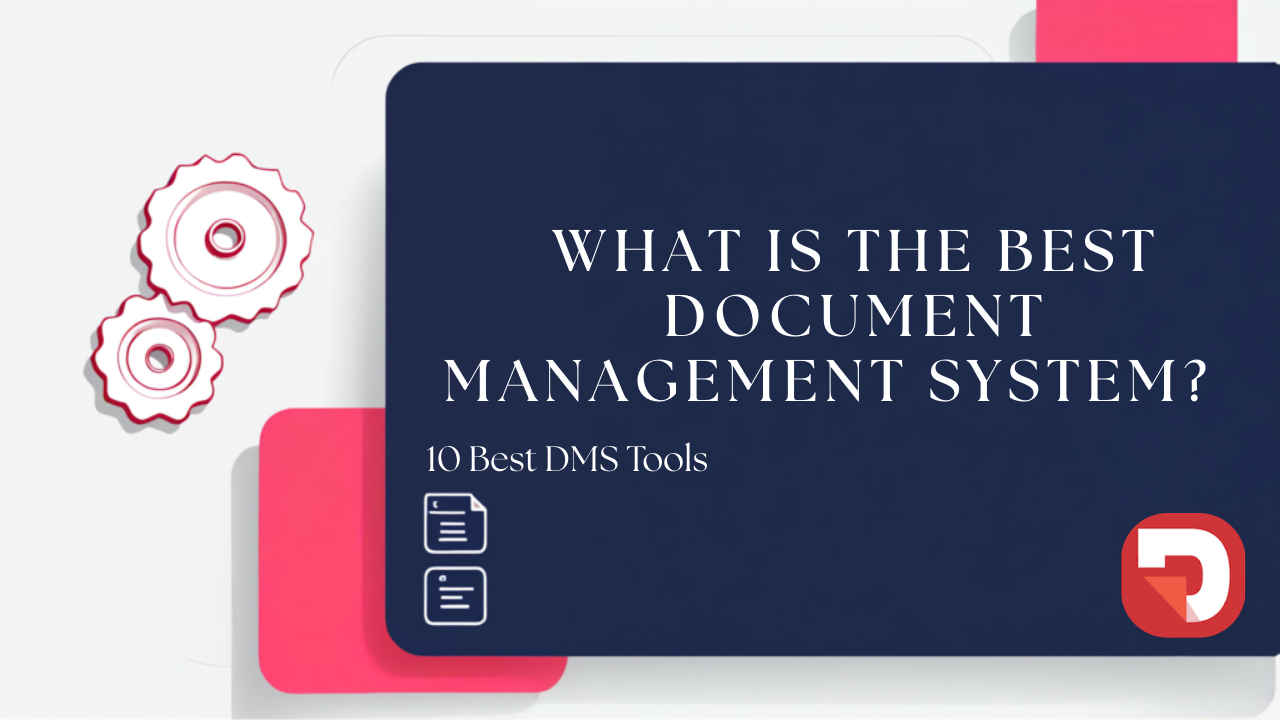
Are you still relying on basic document management and losing documents?
Struggling to find the perfect DMS for you?
We’ve covered 10 of our the best document management systems to help you decide.
A document management system, or DMS, is a software designed to capture, store, manage, and retrieve your digital documents.
The goal of a DMS is to handle and allow you to access your documents at any given time throughout their life cycle. This includes creation, collaboration, archival, and disposal, while keeping strong security measures.
By digitizing all of your company’s documents, you are guaranteed to increase your business’ efficiency and collaboration, while you can also drastically reduce human error and document loss by setting up workflows.
A DMS usually offers document indexing, metadata tagging, full-text search capabilities, workflow automation, user access controls, audit trails, and integration with other enterprise systems like CRMs and ERPs.
Before we get into the specific of our favorite DMS, let’s take a look into the most important and common features your DMS (or ECM) should have.
Workflow automation
Setting up automated workflows will help you collaborate with your team seamlessly.
Workflows are the customizable route based on triggers that your document will automatically follow. Each team member involved will be notified once it is their turn to participate.
For example, sign a document, review a proposal.
What can a workflow look like?
Project proposal
You want to create a proposal for a new project in your DMS. First you create the document and add the metadata and tags.
⬇️
You can then, automatically, send it to your team lead for initial review. The team lead can add notes, that will be visible for everyone involved, approve or reject.
⬇️
The original author can be notified about the status of the proposal and add changes if needed. The DMS will show the most current version.
⬇️
Once it has been edited, the document will move automatically onto the department manager to revise compliance, budget, etc.
⬇️
The next step in the workflow is moving on to the finance department to be signed and stamped.
⬇️
The document is then published.
⬇️
After 10 years, the document is automatically archived.
Your DMS provides digital file cabinets where you can store and organize your documents for as long as you need.
Your files can be categorized and indexed as you see fit.
Document capture allows your DMS to automatically gather your needed documents, This can be done individually or in bulk.
Document capture allows you to scan paper documents, import files from different sources (e.g., email, mobile apps, or network folders), and convert them into structured digital formats.
Advanced DMS solutions often integrate Optical Character Recognition (OCR) to extract and index text from scanned images, making documents searchable and easier to organize.
Your DMS will allow you to categorize your files and documents with advanced indexing that will then allow you to retrieve any document easily.
Especially when using metadata tag, that will allow you to add tags such as authors, client, location, keywords, ID numbers, and much more.
With your DMS, you can also filter search results and save your previous queries in case you need to access those documents repeatedly.
Version control
When using outdated document management, such as organizing files on your own server, you run the risk of forgetting to send updated versions of a document, which can end in chaos.
Your DMS will always automatically update your documents to the most current version so everyone in the team or the organization is looking at the same information. Essentially, your DMS acts as the unique source of trust thanks to version control.
However, previous versions are not completely deleted and disregarded. You can see all updates and previous versions of your documents easily and see when they were updated, signed, or stamped.
Access control and permissions
The best feature (and benefit) a DMS offers is built-in security measures.
To each document you can assign who will be able to view, edit, email, or print each document. Additionally, you can add customized watermarks to your documents to know who opened it at any given time.
Together with audit trails, this will minimize the risk of security breeches and will increase accountability if a team member fails to follow the security measures.
Audit trails
In a DMS, every action is registered indicating what document was accessed and the action type, including timestamps and user identity.
These audits are immutable logs that cannot be modified or deleted.
Audit trails also create reports for compliance audits or security reviews.
Collaboration Tools
The goal of a DMS is to bring all the organization’s documents to one centralized hub where team memebers and departments can work as a whole.
To allow this, document management systems include other collaboration tools including real-time co-authoring, in-document comments, and shared workspaces.
There are many things to take into consideration before you choose your DMS, such as your document volume, deployment (on-premises or in the cloud), advanced features, type of workflows…
We have collected 10 of our favourite DMS tools to help you choose.
| Tools | ECM capability | Metadata tagging | Deployment | AI features | Security roles & permissions | Automated capture |
|---|---|---|---|---|---|---|
| Dokmee | ✅ | ✅ | Cloud, on-premises, hybrid | ✅ | ✅ | ✅ |
| DocuWare | ✅ | ✅ | Cloud, on-premises, hybrid | ✅ | ✅ | ✅ |
| Google Workspace | ❌ | ❌ | Cloud | ❌ | ✅ | ❌ |
| PandaDoc DMS | ❌ | ❌ | Cloud | ✅ | ✅ | ❌ |
| M-Files | ❌ | ✅ | Cloud, on-premises, hybrid | ✅ | ✅ | ✅ |
| Laserfiche | ✅ | ✅ | Cloud, on-premises, hybrid | ✅ | ✅ | ✅ |
| Revver | ❌ | ✅ | Cloud | ✅ | ✅ | ✅ |
| Microsoft SharePoint | ❌ | ✅ | Cloud, on-premises, hybrid | ✅ | ✅ | ✅ |
| Zoho WorkDrive | ❌ | ❌ | Cloud | ❌ | ✅ | ❌ |
| FileHold | ✅ | ✅ | Cloud, self-hosted | ✅ | ✅ | ✅ (SmartSoft integration) |
Ratings ⭐⭐⭐⭐⭐
G2 4.2/5 | Capterra 4.7/5
Overview
Dokmee is considered by some as the top performer in document management. It can serve as both a DMS and ECM due to its advanced features and AI capabilities.
Dokmee stands out for its user-friendly interface, powerful workflow automation, and enterprise-grade security features.
It offers both on-premise and cloud-based deployment options, giving organizations flexibility based on their IT infrastructure and compliance requirements.
With Dokmee you can build customized and advanced workflows. Users can automate multi-step approval processes, assign tasks, and track the status of documents.
The system also includes automated capture and intelligent indexing and search functionalities, powered by OCR, which allow users to locate files quickly using keywords, metadata, or full-text search across scanned and native digital documents.
The tool integrates completely with other tools such as Microsoft Office, SAP, and QuickBooks, and allows you to fully edityour documents or presentations without leaving the tool at all.
Dokmee also has an electronic forms feature that allows you to include e-signatures, upload files, create custom form templates, or generate and export form reports.
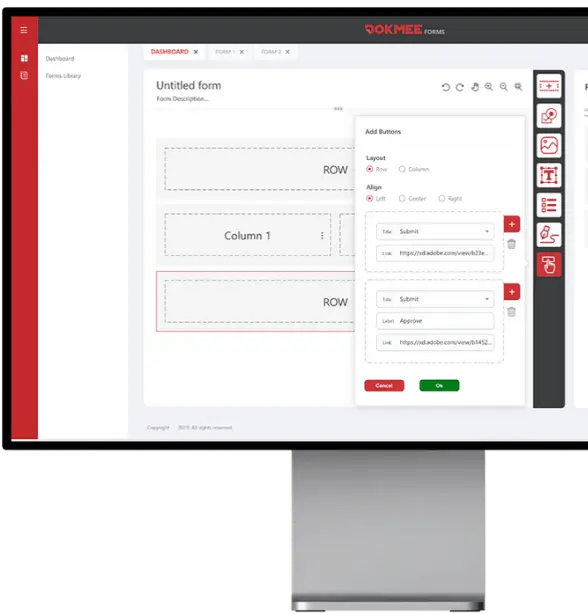
✅ Pros
❌ Cons
Ratings ⭐⭐⭐⭐⭐
G2 4.4/5 | Capterra 4.6/5
Overview
DocuWare is a cloud-based document management system that is best suited for mid-sized to large enterprises.
DocuWare specializes in its AI-powered document classification, repository, and workflow engine.
DocuWare’s intelligent indexing engine uses machine learning and AI to automatically recognize and classify documents during import to reduce manual data entry and improving accuracy.
It integrates with with Microsoft 365, SAP, Outlook, and various ERP and CRM systems.
The platform also provides customizable digital forms to collect structured information and automate the information flow.
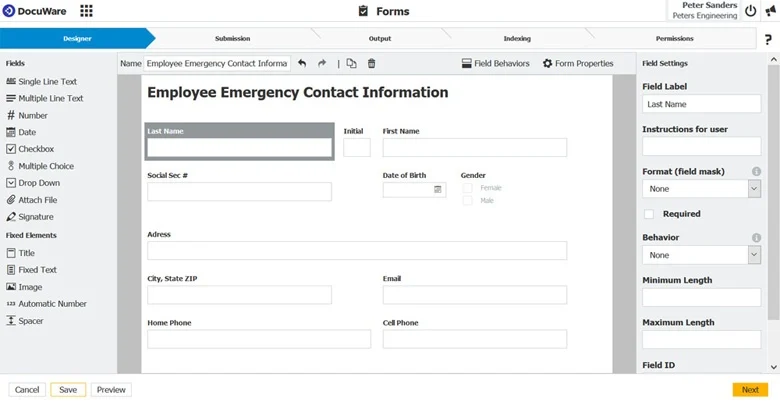
Source: DocuWare
✅ Pros
❌ Cons
Ratings ⭐⭐⭐⭐⭐
G2 4.6/5 | Capterra 4.7/5
Overview
Google Workspace wasn’t really born as a DMS, however, it is a cloud-based platform that now allows document creation, collaboration, and management.
With tools like Google Drive, Docs, Sheets, and Shared Drives, Workspace enables teams to create, store, organize, and collaborate on documents in real time, without the need for complex installations or IT infrastructure.
This is a better option for smaller teams or companies, and startups that have a low volume of documents and don’t require high level automation.
Google Drive’s search capabilities, powered by Google’s own search engine technology, are fast and intuitive, using file names, content, and metadata to locate documents.
For organizational needs, you can set up Shared Drives with role-based permissions, organize documents by folders or labels, and manage access through Google Admin tools.
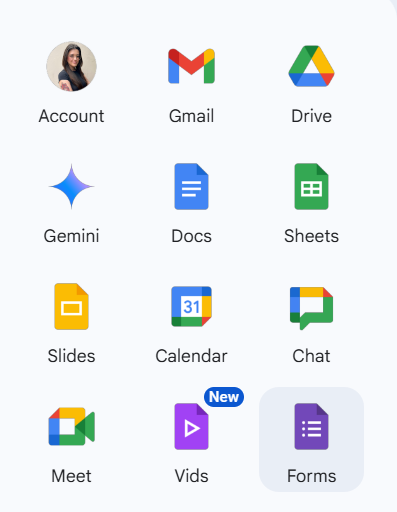
✅ Pros
❌ Cons
Ratings ⭐⭐⭐⭐⭐
G2 4.7/5 | Capterra 4.5/5
Overview
PandaDoc is a document automation and e-signature platform.
It now has a fully integrated DMS with a content library packed with templates that will help you create customized documents and workflows, so you can keep brand consistency across all of your documents.
One of PandaDoc’s most notable features is its drag-and-drop document builder, which allows users to create highly customizable and interactive documents using reusable templates, embedded media, pricing tables, and form fields.
This design flexibility is complemented by real-time tracking and analytics, letting users know when recipients open, view, or complete documents.
PandaDoc connects easily with CRM systems like Salesforce, HubSpot, and Pipedrive, as well as tools like Zapier, Slack, and payment processors.
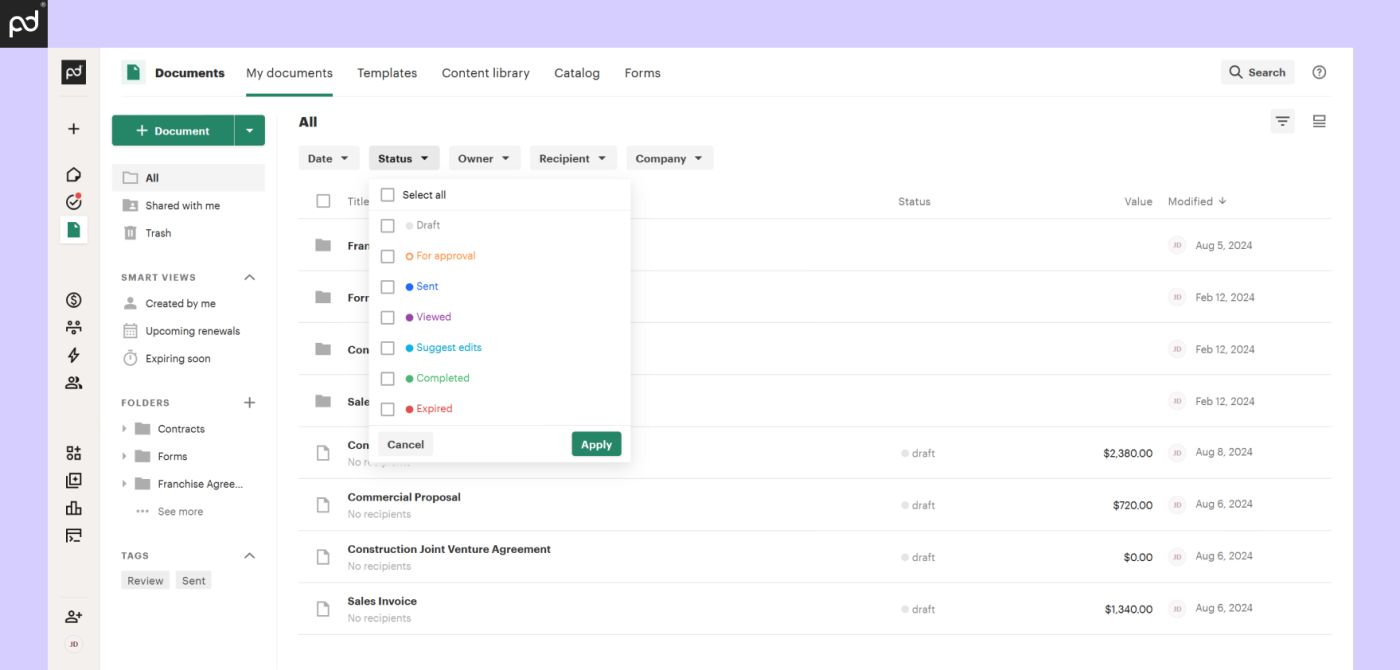
Source: PandaDoc
✅ Pros
❌ Cons
Ratings ⭐⭐⭐⭐
G2 4.4/5 | Capterra 4.4/5
Overview
M-Files is a document management system that strongly relies on metadata tagging, as opposed to file cabinets.
M-Files is best suited for organizations with complex document structures or compliance-heavy workflows, such as legal firms, engineering companies, and financial institutions.
M-Files combines automation, compliance controls, and AI-powered search.
One of M-Files’ best features is its use of AI and metadata tagging to automate classification, permissions, and document lifecycle management. M-Files uses contextual metadata (like client name, project ID, or document type) to instantly surface relevant content regardless of its physical storage location.
With M-Files, you can build custom workflows for document approvals, quality checks, or legal sign-offs, complete with automated notifications and audit trails.
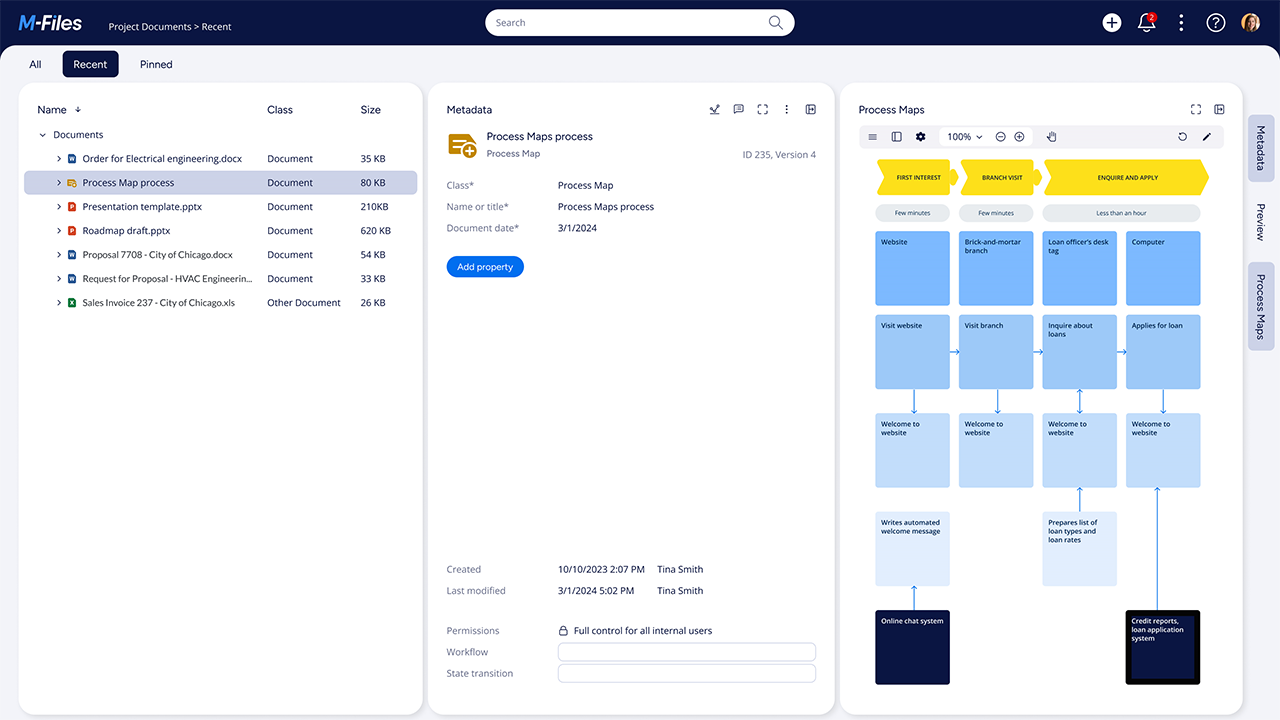
Source: G2
✅ Pros
❌ Cons
Ratings ⭐⭐⭐⭐⭐
G2 4.7/5 | Capterra 4.5/5
Overview
Laserfiche is an AI-powered DMS and business automation tool. IT is best suited for large enterprises, governments, and educational institutions.
Laserfiche offers a blend of document control, compliance enforcement, and low-code automation tools that allow businesses to redesign workflows.
The platform includes a low-code workflow builder that allows you to automate tasks such as approvals, data routing, and compliance checks with minimal IT intervention.
Laserfiche also includes intelligent capture tools that use OCR and machine learning and integrates with systems like Microsoft 365, Salesforce, and ESRI.
Laserfiche’s security model is enterprise-grade, supporting role-based access controls, encryption, and audit trails.
Another strength lies in its analytics and reporting features, which provide visual insights into document usage and workflow efficiency.
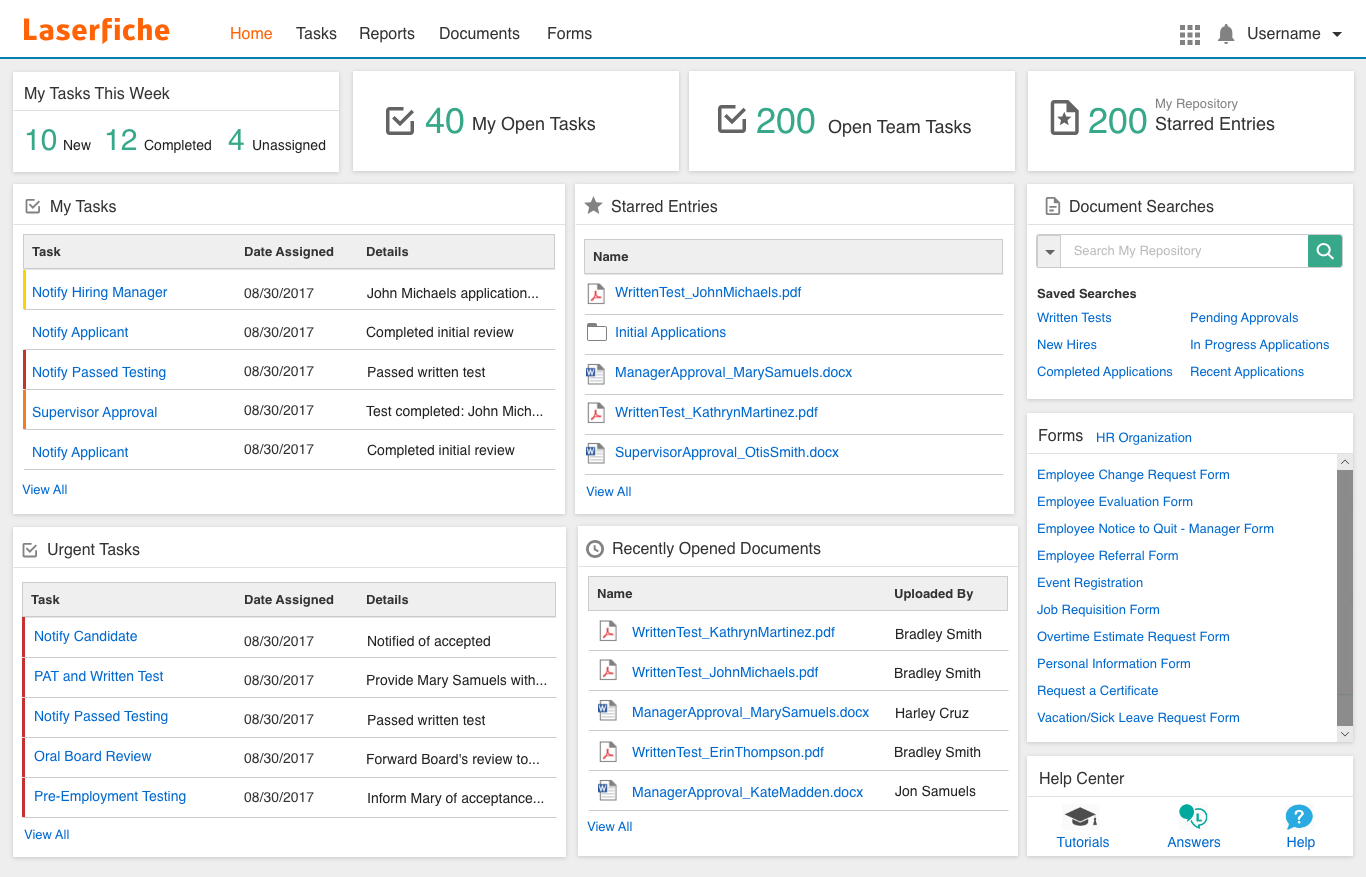
Source: G2
✅ Pros
❌ Cons
Ratings ⭐⭐⭐⭐
G2 4.3/5 | Capterra 4.4/5
Overview
Revver (formerly eFileCabinet) is a modern document management system fit for SMBs.
Revver uses AI to manage your documents, and its user-friendly interface makes it particularly appealing to organizations that want a simple implementation without sacrificing features.
Revver also supports automated workflows where you can automate repetitive tasks such as file routing, approvals, and document naming without needing coding experience.
Revver uses pre-defined templates and metadata to automatically file documents into the correct folders, helping reduce human error and improve consistency. Additionally, the system offers version control, full audit trails, and granular permission settings to manage document access and history.
Revver is a cloud-based DMS with integrations such as Microsoft 365, DocuSign, and various CRM tools.
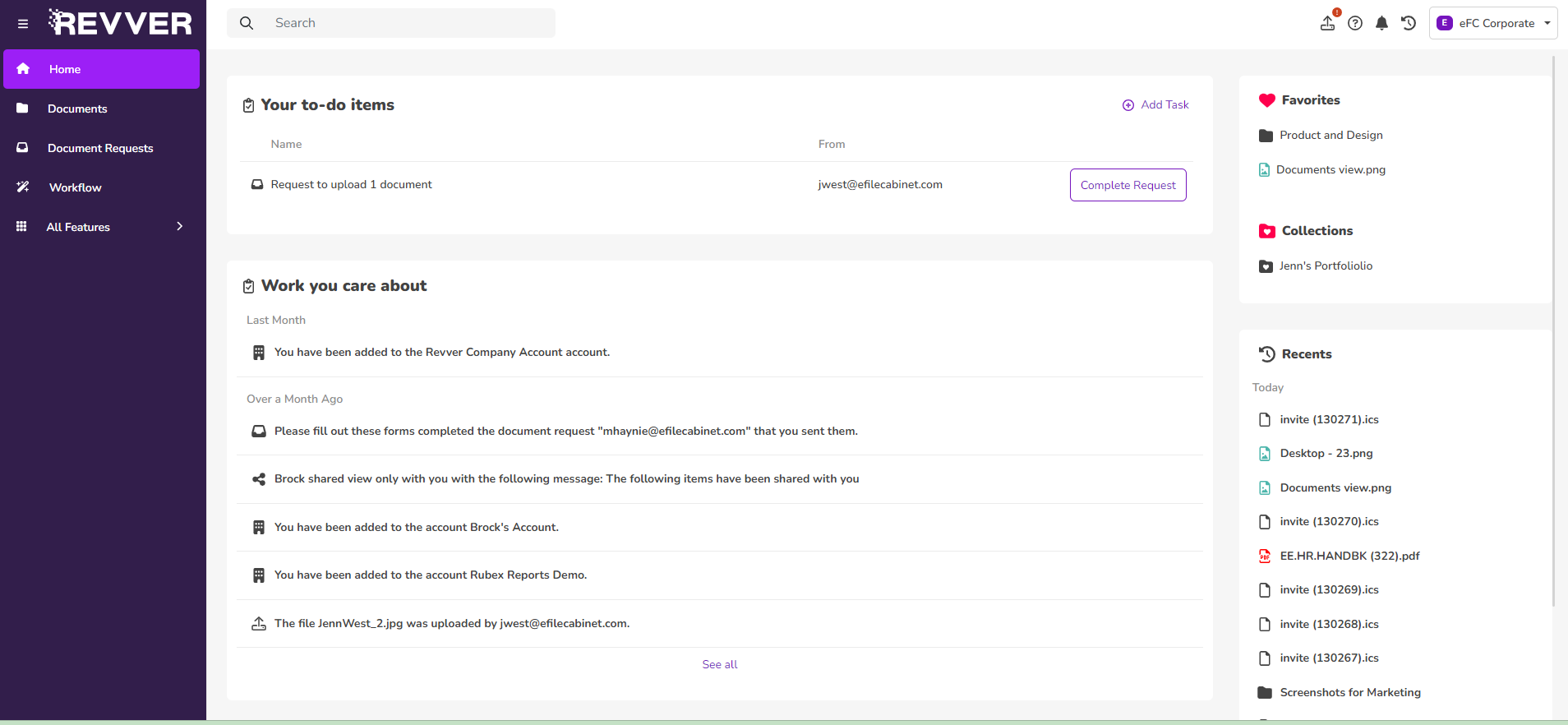
Source: G2
✅ Pros
❌ Cons
Ratings ⭐⭐⭐⭐
G2 4/5 | Capterra 4.3/5
Overview
Microsoft SharePoint is a DMS with seamless integration into the Microsoft ecosystem.
It offers centralized storage, version control, and enterprise-wide collaboration. For organizations already using Microsoft 365, SharePoint offers a natural extension of existing tools like Word, Excel, Teams, and OneDrive.
SharePoint has a highly customizable architecture. Organizations can design document libraries with metadata, workflows, permission levels, and retention policies.
SharePoint also supports real-time co-authoring to bring teams closer together.
In terms of document governance, SharePoint provides strong compliance and security features including user-level access controls, Microsoft Purview integration for information protection, and automated document lifecycle policies.
It’s scalable for both small teams and large enterprises, with cloud and hybrid deployment options through SharePoint Online and SharePoint Server.
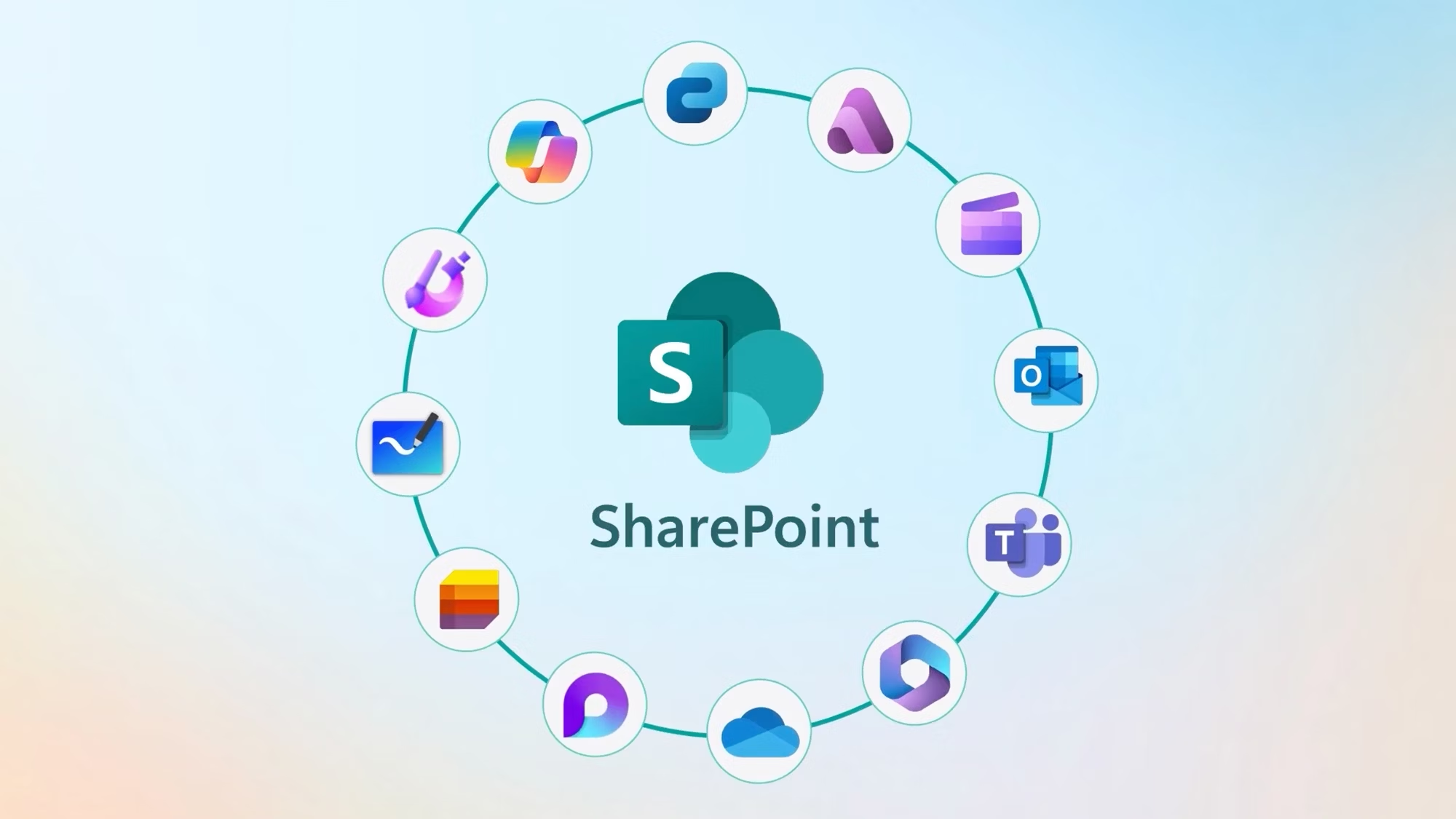
✅ Pros
❌ Cons
Ratings ⭐⭐⭐⭐⭐
G2 4.3/5 | Capterra 4.6/5
Overview
Zoho WorkDrive is a cloud-based DMS tailored primarily for SMBs.
As a part of Zoho, WorkDrive integrates naturally with other Zoho applications like Zoho CRM, Zoho Projects, and Zoho Mail.
Although it doesn’t offer the same level of deep enterprise customization as other DMS solutions, its clean interface, team collaboration tools, and document controls make it a good option for growing businesses.
WorkDrive focuses on team-based file management. WorkDrive centralizes documents in “Team Folders,” each with its own set of roles, permissions, and workflows. This helps reduce silos and keeps file ownership transparent and consistent.
WorkDrive also includes built-in file recovery, audit trails, and compliance support such as GDPR readiness.
Its desktop sync app, mobile access, and offline capabilities offer flexibility for hybrid or remote teams.
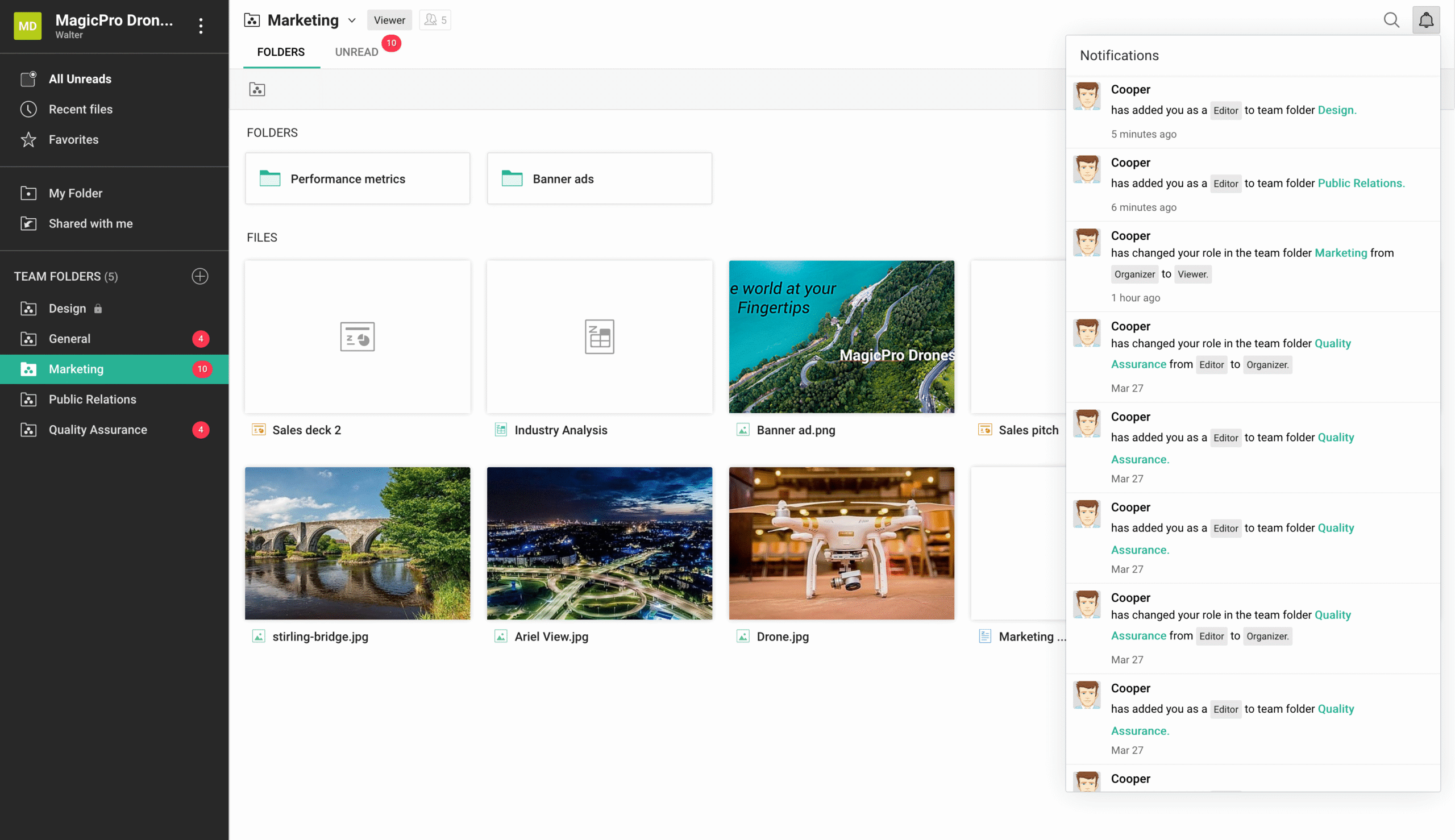
Source: G2
✅ Pros
❌ Cons
Ratings ⭐⭐⭐⭐⭐
G2 4.6/5 | Capterra 4.7/5
Overview
FileHold is an on-premise and private cloud DMS designed for medium to large enterprises with strict compliance, security, and information governance needs.
FileHold excels in complex environments, especially those in government, manufacturing, legal, and healthcare sectors, where regulatory standards and structured workflows are essential.
FileHold supports hierarchical document libraries with granular metadata tagging, role-based access, and full version history. It offers retention schedules, automated archiving, and legally defensible deletion policies.
Workflow automation is built into the tool, allowing users to design and manage documents with multi-step approvals, compliance checks, or contract reviews. FileHold also provides a built-in document viewer that allows users to annotate, redact, and digitally sign files without needing third-party software.
Additionally, FileHold includes an audit logging system to track every document interaction.
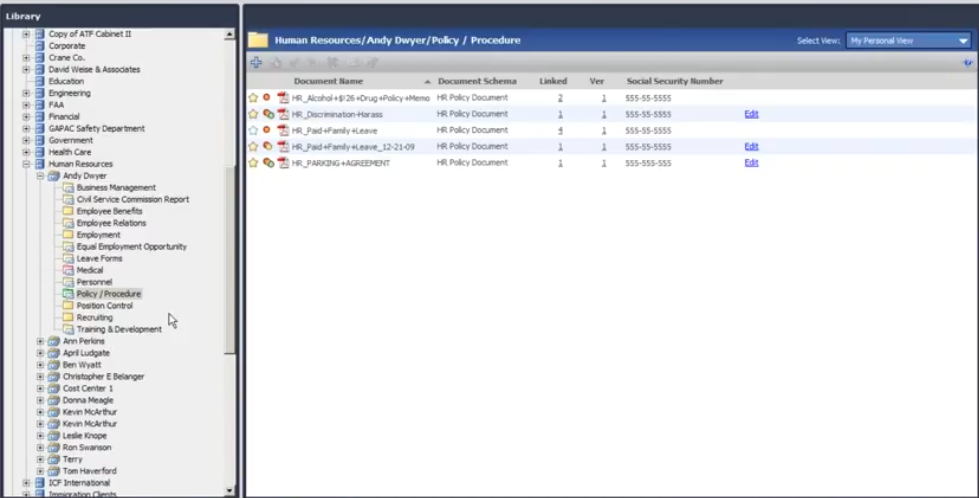
Source: Sourceforge.net
✅ Pros
❌ Cons
There is no right or wrong answer.
Every business and organization has its own set of needs. What makes a DMS the best option is that it suits your needs completely.
We’ll leave you with a quick checklist of some features your DMS should have in order to make the most out of your tool.
🔲 Scalability
🔲 Budget-friendly
🔲 Compliance and security features
🔲 Audit trails
🔲 Metadata tagging
🔲 Your preferred deployment
🔲 Collaboration features
🔲 E-signature
🔲 Workflow builder
🔲 Mobile access
If you’re looking for a DMS that checks out all the boxes, try Dokmee today.